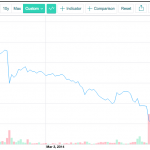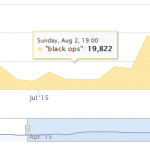I am amazed that so many Wall Street pundits and investors alike still love AutoZone Inc. (NYSE:AZO) and consider the stock to be cheaply priced. They always point to AZO’s consistent double-digit earnings growth as the reason for investing in the stock, even if those same EPS figures are manipulated by leveraged stock buybacks and inventory classifications. I must admit that the longs in this stock have done very well over the years, and I have been utterly astounded at how well management has financially engineered this company and its underlying stock price. Management utilized as much leverage as they could squeeze out of bankers and the company’s suppliers for the sole purpose of buying back AutoZone shares. This has caused the stock to rise over 500% during the past 7 years and has made management rich in the process, as they were able to cash out their employee stock options worth hundreds of millions of dollars during this period. The management team owns less than 1% of all outstanding shares, but continues to authorize these huge buybacks. Management is willing to use other people’s money to buy the stock, but not their own money.
How much leverage has AutoZone utilized? Currently, the company has $5 billion in long-term debt that it was able to borrow from bankers and institutional investors in its debt offerings. It squeezed another $4 billion from its suppliers, which is the amount currently owed. Amazingly, AutoZone only has $3.6 billion in inventory right now, and even if the company sold every single item in its stores, it still would not have enough money to pay off their suppliers, let alone the bankers and debtholders. That is why even though Wall Street currently values this company at $22 billion, it actually has a negative $2 billion tangible book value. What this means is that if one day this company is forced into bankruptcy protection filing and is liquidated, it owes $2 billion more than all the assets it has to sell. As AutoZone continues to squeeze suppliers and borrow more money for buybacks, that deficit will continue to grow even larger

















Leave A Comment